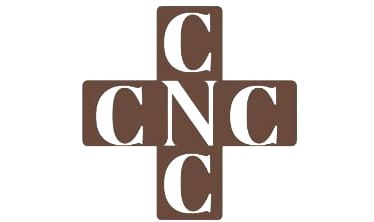How Long Does a PCNL Take, Is PCNL a Major Surgery?
Introduction to PCNL
When it comes to managing kidney stones, various treatment options exist, and Percutaneous Nephrolithotomy (PCNL) stands out as a crucial procedure in urology. PCNL involves accessing the kidney through a small incision in the back to remove kidney stones. How Long Does a PCNL Take: This article delves into the intricacies of PCNL, its duration, and whether it qualifies as a major surgery.
Understanding PCNL Procedure
PCNL, also known as keyhole surgery, is a minimally invasive technique designed to remove large kidney stones or multiple stones simultaneously. The procedure begins with the patient under general anesthesia, lying on their stomach or side. A tiny incision is made in the back, allowing the surgeon to insert a nephroscope, a specialized instrument equipped with a camera and tools, into the kidney.
Factors Influencing Duration of PCNL
The duration of a PCNL surgery can vary depending on several factors. These include the patient’s overall health condition, the size and complexity of the kidney stones, and the experience of the operating surgeon.
Average Duration of PCNL Surgery
On average, a PCNL surgery typically lasts between one to three hours. However, the exact duration may differ based on individual circumstances. Complex cases or unforeseen challenges during the procedure can prolong the surgical time.
Is PCNL Considered a Major Surgery?
PCNL is classified as a major surgical procedure due to its invasive nature and the potential risks involved. It requires general anesthesia and involves accessing the kidney through an incision in the back, making it more extensive than some other kidney stone treatments.
Risks and Complications of PCNL
Like any surgical procedure, PCNL carries certain risks, including bleeding, infection, injury to surrounding organs, and post-operative pain. However, these risks are minimized by careful patient selection, skilled surgical techniques, and comprehensive post-operative care.
Recovery Period After PCNL
Following a PCNL surgery, patients typically require a hospital stay of one to two days for monitoring and pain management. Full recovery may take several weeks, during which time patients are advised to rest and avoid strenuous activities.
Importance of Consultation and Evaluation
Before undergoing PCNL, patients undergo a thorough evaluation, including imaging studies and laboratory tests, to assess their suitability for the procedure. It is essential to have open communication with healthcare providers to address any concerns and ensure optimal outcomes.
Patient Experience and Testimonials
Many individuals who have undergone PCNL report significant relief from kidney stone-related symptoms and express satisfaction with the procedure’s effectiveness. Hearing firsthand accounts from patients can provide valuable insights for those considering PCNL as a treatment option.
Advancements in PCNL Techniques
Over the years, advancements in technology and surgical techniques have led to improvements in PCNL procedures. These include the development of smaller instruments, enhanced imaging modalities, and refined surgical approaches, resulting in better outcomes and shorter recovery times for patients.
Comparison with Other Treatment Options
While PCNL is highly effective for certain types of kidney stones, it may not be suitable for all patients. Alternative treatments, such as Extracorporeal Shock Wave Lithotripsy (ESWL) or Ureteroscopy, offer less invasive options depending on the size and location of the stones.
Cost and Accessibility of PCNL
The cost of PCNL surgery can vary depending on factors such as the healthcare facility, surgeon’s fees, and insurance coverage. However, many insurance plans provide coverage for medically necessary procedures like PCNL, making it accessible to a wide range of patients.
Addressing Common Concerns About PCNL
Patients often have concerns about pain management during and after PCNL surgery, as well as worries about the long-term success of the procedure and the possibility of stone recurrence. Healthcare providers can address these concerns through education and personalized care plans.
Discover Laparoscopic Surgery Hospital in Jammu-(careNcure Nursing Home Hospital) Read More: https://carencurenursinghome.com/2024/03/19/laparoscopic-surgery-hospital-in-jammu/
Lifestyle Changes for Prevention
In addition to undergoing treatment for existing kidney stones, adopting certain lifestyle modifications can help prevent their recurrence. This includes staying hydrated, maintaining a balanced diet low in sodium and oxalates, and avoiding excessive consumption of certain foods known to contribute to stone formation.
Conclusion
In conclusion, PCNL is a valuable surgical option for managing kidney stones, offering effective stone removal with minimal invasiveness. While it is considered a major surgery, the benefits of PCNL often outweigh the risks for suitable candidates. By consulting with healthcare providers and understanding the procedure’s intricacies, patients can make informed decisions about their kidney stone treatment.
FAQs (Frequently Asked Questions)
- Is PCNL painful?
- While discomfort is common after PCNL, pain can be managed with medications prescribed by your healthcare provider.
- How long does it take to recover from PCNL?
- The recovery period varies but typically ranges from a few weeks to a few months, depending on individual factors.
- Are there any dietary restrictions after PCNL?
- Your healthcare provider may recommend dietary modifications to reduce the risk of stone recurrence, such as avoiding certain foods high in oxalates.
- Can PCNL be performed on both kidneys simultaneously?
- In some cases, bilateral PCNL may be necessary, but it is typically performed on one kidney at a time to minimize risks.


